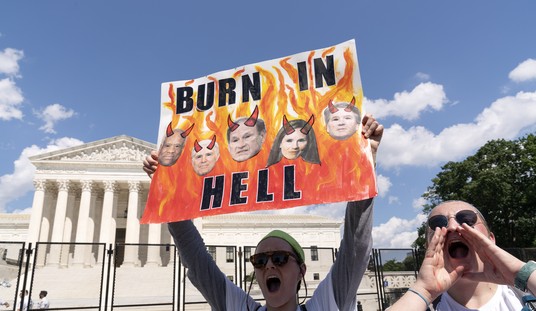The Atlantic hurricane season is winding down, three weeks until November 30, the official end date of the season. (Not that Mother Nature always respects the “official” guidelines. The final tropical storm of 2005 formed on December 30 — I remember it well, as it was my wedding day — and didn’t dissipate until January 6, 2006.) Already, the odds of further activity are seriously diminished; climatologically speaking, the number of tropical storms and hurricanes takes a major nose-dive after around October 25.
It’s therefore entirely possible, if not probable, that Hurricane Noel, which killed at least 148 people in the Caribbean and then brought wind and rain to the northeastern U.S. as a non-tropical Nor’easter last weekend, will close the book on the ’07 season.
Weather Underground meteorologist and weatherblogger Dr. Jeff Masters writes that “none of the reliable computer forecast models are predicting formation of a tropical cyclone over the coming week” and “it appears that we will not have any more landfalling tropical storms” for the rest of the year. So it’s time, then, to begin writing post-mortems of the 2007 Atlantic hurricane season. As popular discourse would have it, the season has been a very mild one — our second consecutive reprieve after the active, Florida-centric season of 2004and the hyperactive, historic, mind-bogglingly devastating season of 2005.
However, by the most widely used and commonly quoted measure of hurricane season strength — the total number of storms — that popular discourse is wrong. In the average Atlantic hurricane season, there are 11 named storms, six hurricanes and three major hurricanes.
Thus far, 2007 has seen 14 named storms, five hurricanes and two major hurricanes — one of which, Hurricane Dean, was the third-most intense major hurricane ever recorded at landfall in the Atlantic basin. This season also set several records for rapid intensification, and was just the fourth season ever to witness two Category Five hurricanes (Dean and Felix), as well as the first ever in which two hurricanes made landfall while at Cat. 5 status.
With regard to those 14 named storms, some weatherbloggers and other commentators have accused the National Hurricane Center of “count-padding,” suggesting that they may have been overeager to designate a few borderline systems that in past years would not have been given a name. Even if this is correct, however, the “true” named-storm count would probably hover right around 11, making 2007 a thoroughly average — not significantly below-average, certainly not drastically weak — hurricane season, by that measure.
Why, then, are many people so underwhelmed by the level of Atlantic tropical activity in 2007? The answer is threefold. First of all, for the second consecutive year, meteorologists had almost universally predicted an above-average season, and for the second consecutive year, those predictions were not borne out. (Most forecasts called for between 14 and 17 named storms, between 7 and 9 hurricanes, and between 3 and 5 major hurricanes.) 2007 may not have been below average, but it has certainly been below what was predicted. Of course, this particular issue has implications for the global warming debate, which I will discuss later in this article.
(As an aside, when Matt Drudge recently linked to a Florida State study of tropical activity in the entire Northern Hemisphere, his headline, “Forecasters Blow It Again … As 2007 Hurricane season may rank as most ‘inactive’ in past 30 years,” was breathtaking in its deceptiveness. The “forecasters” in question forecasted only Atlantic activity, not Hemisphere-wide activity, and Atlantic activity certainly was not “the most inactive in 30 years.” Nor is there necessarily a correlation; often times, an active season in one basin will coincide with an inactive season in another. 2005, for instance, was a below-normal season in the eastern Pacific. Anyway, to suggest that forecasters “blew it” this year because they predicted an active Atlantic season, and then the Northern Hemisphere season was historically inactive, is a bit like using a low nationwide election turnout to discredit a political pundit who predicted high turnout in California. It’s an apples-to-oranges comparison of the worst kind.)
The second reason people have been underwhelmed by the 2007 Atlantic hurricane season is probably the most valid: an unusual number of the season’s storms have been notably weak. In fact, judging by Accumulated Cyclone Energy, a measurement of storms’ strength over time, there was actually less tropical activity in 2007 than in 2006, even though ’06 saw just ten named storms to ’07’s fourteen. The total ACE for 2007 to date is 67.0, well below average — and more than half of that number resulted from a single storm, Hurricane Dean, which had an ACE of 33.75. Only three other storms in 2007 had an ACE of greater than 2. By contrast, the total ACE rating for 2006 was 78.5, and all but one of the ten storms had a ACE greater than 2.
Why so many weak storms in 2007? Frankly, it has a lot to do with dumb luck. As Dr. Masters wrote in mid-October, “We’ve gotten very lucky this hurricane season since the departure of Hurricane Felix in early September. We had a record eight named storms form in September, yet we had only four hurricane days that month. Wind shear has been strategically high at the right time and right place, and storms have tended to form too close to land to develop.” Along the same lines, amateur weatherblogger Alan Sullivan wrote in late September, “This season is just plain strange: it has brought an exceptional number of duds. Evidently long-range forecasters like Dr. Gray were half-right. Preconditions for a real storm-fest were present, but tropical systems have been snuffed by unusual upper winds that I began to notice in May. Only Dean and Felix escaped, running straight west at very low latitude.”
Thirdly, and perhaps most importantly, this season’s storms generally took very favorable tracks from the perspective of the United States. The season’s two major hurricanes, Dean and Felix, stayed in the deep tropics and never seriously threatened the U.S. mainland. Storms that tried to move toward the East Coast invariably recurved out to sea and bothered only shipping interests. Storms that could have posed a threat if they’d reached the Gulf of Mexico — where the water was at times more bathtub-like than in 2005 — were either sheared apart or steered elsewhere. The one system that did manage to get its act together in the Gulf, Hurricane Humberto, was so close to land by the time it developed that its amazing rapid intensification burst just before landfall could only bring it to minimal Category 1 status. If Humberto had formed 24 hours earlier or a couple hundred miles further out over open water, it could have been a vastly more serious problem for Texas and Louisiana, but as happened so many times in 2007, we lucked out. (This phenomenon was not limited to America. Even Hurricane Dean, despite its historic intensity, consistently eschewed worst-case scenarios, seemingly making each of its landfalls in about the most favorable, least popualted locations imaginable, such that its impact was lessened. “It could have been worse” became a refrain echoing across weather blogs throughout that storm’s life.)
Truth be told, the public perception of whether a hurricane season is “active” really has little to do with the total amount of tropical activity throughout the Atlantic basin. It has much more to do with how many storms hit, or at least seriously threaten, the United States, and how strong those storms are. In this regard, each storm’s “media footprint” matters as well. For instance, because Humberto blew up into a hurricane literally overnight, it was preceded by very little MSM hype, to the point where it barely registered on the national consciousness. Contrast that with 2006’s Hurricane Ernesto, which ended up being a “dud,” but only after teasing and taunting the Gulf and East Coast for days with the prospect of a major hurricane landfall — right around the first anniversary of Hurricane Katrina, no less. Humberto was a more serious storm in the end, but Ernesto got more play in the media.
Of course, the biggest contributor to public perception of hurricane activity is whether the U.S. coast is actually hit by a damaging hurricane — and in that sense, preseason forecasts tell us almost nothing of value. As an NHC forecaster once said, “An active year is the year when you get hit.”
Case in point: the second-costliest hurricane in U.S. history after Katrina, 1992’s Hurricane Andrew, was the first storm of a “weak” and late-blooming hurricane season. But few remember that not a single storm earned a name during the season’s first 2 1/2 months, or that only five storms followed Andrew for a below-average seasonal total of six named storms (plus one unnamed subtropical system) that has not been matched since. All anyone remembers is the $38.9 billion (in today’s dollars) of damage, the 65 deaths, that incredible radar image and the photos of the devastation in Homestead, Florida.
This brings us a broader question: what exactly is the point of these pre-season forecasts? Since the madness of 2005, meteorologists have been hyping these forecasts with ever greater enthusiasm, and the media has been only too happy to parrot the forecasted numbers with little context or analysis. Meteorology Ph.D. student and weatherblogger Charles Fenwick had an excellent post about this phenomenon back in August, in which he wrote:
I don’t take too much interest in them personally and
don’t like how they are being pushed to the general public. They are a
experimental works in progress and should be treated as such. I am
most displeased with NOAA’s trumpeting of their forecasts. It gives
the public the sense that these are operational forecasts that are on
par with the other forecasts of the National Weather Service and that
is definitely not the case. [One blog commenter asked], “Where are all
the hurricanes the NHC had forecast for the last 2 years? just curious
as to why we should panic over predictions that have little or no
accuracy?” This shows the confusion that the hurricane season
forecasts cause because the National Hurricane Center is not the
agency that puts out the seasonal forecast and, as I just said, the
seasonal forecasts do not have the same accuracy as the operational
forecasts put out by the NHC. … [The seasonal] forecasts are most
useful for people who have a stake in the macro-scale, namely
insurance companies. They are of little value to individuals. …
These forecasts as they are now don’t tell people that and may instead
give them a false sense of security when an inactive year is
forecast.
As I wrote at that time, “I wonder if the whole exercise [of preseason forecasts] isn’t futile or even counterproductive at this point. What is gained by giving people a rough estimate (or rather, multiple rough estimates) of the number of storms that might form each year?
Hypothetically, a big number might encourage them to prepare – but shouldn’t they be prepared regardless of the number (considering Hurricane Andrew hit in a season that saw just 7 storms)? And isn’t the preparedness advantage more than offset by the danger of complacency caused by this “crying wolf” perception? … I worry that the credibility of hurricane forecasters is being undermined – even as their ability to predict individual storms continues to improve by leaps and bounds – because of misunderstandings and misperceptions about long-term forecasts that aren’t all that useful anyway.”
Some observers see a more sinister explanation for the seasonal forecasts, believing they are part of a campaign by agenda-driven scientists to hype the global-warming threat. If this were so, it would be a very short-sighted, risky, and ultimately counterproductive move, since the hype generated by inflated forecasts is short-lived and turns predictably into a backlash when the numbers are not borne out by reality. (This theory of agenda-driven forecasting also ignores the fact that Dr. William Gray, one of the most prominent and longstanding seasonal forecasters, is an outspoken global-warming skeptic.)
In reality, the preseason forecasts for 2006 and 2007 were not dishonest or inflated. They were simply wrong. But why were they wrong? For a variety of meteorological reasons that have nothing to do with Al Gore and everything to do with the incredible variability and unpredictability of weather. Tropical storms and hurricanes are fickle creatures, impacted by both large atmospheric patterns and small-scale phenomena. Any attempt at predicting an exact number of storms, months in advance, is going to run the risk of major inaccuracies. Some years (like in 2005), the predictions underestimate the number of storms. In 2006 and 2007, they overestimated it. These variations do not a conspiracy make.
Ah, some say, but if scientists can’t even predict the number of hurricanes in a given year, how can they possibly predict the state of the Earth’s climate in 50 or 100 or 500 years? This argument is superficially compelling but fatally flawed, as it ignores the massive differences between the types of phenomena being predicted. Predicting the average temperature of the Earth in a given number of years is, at least arguably, much easier than predicting the precise number of hurricanes next year, or for that matter, the precise temperature (in tenths of a degree) at 4:57 PM tomorrow. The reason: the planet’s average temperature over a long period of time is not impacted by short-period, butterfly-effect type variables in the way that shorter-term forecasts are. This is not to say that long-term climate forecasts are necessarily accurate, but if they are to be proven inaccurate, it must be done some other way. The argument that “short-term and medium-term forecasts are flawed, therefore long-term forecasts must be even more flawed” simply does not pass muster.
What, then, can we take away from the 2006 and 2007 hurricane seasons, for purposes of the global-warming debate? The honest answer is, not very much. The Houston Chronicle‘s Eric Berger writes that “with its Category 5 storms and low ACE index, the 2007 season offers ammunition for both camps of scientists arguing over the impact of global warming on hurricanes.” Ammunition, perhaps, but both camps are largely firing blanks. “All scientists agree,” Berger writes, “that a single hurricane season cannot make or break an argument for global warming having a measurable impact of hurricanes.” Alas, this message is often lost on non-scientists in the pro- and anti- crowds.
Just as it was both unsound and unwise for some global-warming advocates to hold up the 2005 hurricane season as proof of their position, it would be equally unsound and unwise for global-warming skeptics to hold up 2006 and 2007 as somehow disproving the existence of global warming. Such arguments are unsound because they confuse climate, which is comprised of long-term trends, with weather, which chronicles individual events. They are also unwise strategically because they are so vulnerable to attack when things — predictably — turn out differently in future years.
The heavy reliance on 2005 in certain quarters, which gave some lay observers the false impression that all hurricane seasons would henceforth be similar to the freakish ’05 season, left global-warming advocates open to cynicism, criticism and rebuttal when 2006 and 2007 failed to live up to expectations. Similarly, a global-warming skeptic who claims today that 2007 disproves global warming is leaving himself open to the argument, if 2008 is an active season, that ’08 proves global warming is real after all. The more honest (and strategically sound) course, for both sides, is to discuss global warming on its actual merits, and not obsess over minor year-to-year variations that tell us very little, if anything, about long-term trends.
In any event, the whole argument over global warming really misses the point, in a certain sense. The biggest downside of the politicization of weather is that it has largely blinded us to more pressing issues related to disaster preparedness.
Regardless of whether global warming is real and manmade — and regardless of whether warming ocean temperatures will lead to more active hurricane seasons, which is actually a separate question — it is an undeniable reality that hurricanes are going to become more damaging and deadly in the coming decades because of increased coastal development. It is also undeniable that certain cities (e.g., Houston/Galveston, Tampa, Miami, New York, and, still, New Orleans) are incredibly vulnerable to absolute devastation from a major hurricane, and more steps need to be taken to protect them, regardless of global warming. Disaster preparedness should not be a political issue, but because of intellectual dishonesty and laziness on both extremes in this feud, it has become one.
Whatever our positions on global warming and related political issues, we should all be happy that the 2006 and 2007 hurricane seasons have turned out to be relatively less devastating than some other recent seasons — and we should use that relative inactivity not as an excuse to grow complacent, but as an opportunity to get ready for the next big storm. Because there will be another big storm. That’s one inconvenient truth that nobody can deny.
Brendan Loy blogs at Irish Trojan in Tennessee








Join the conversation as a VIP Member